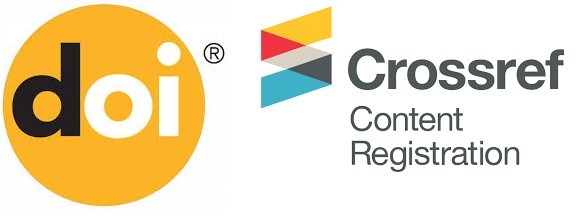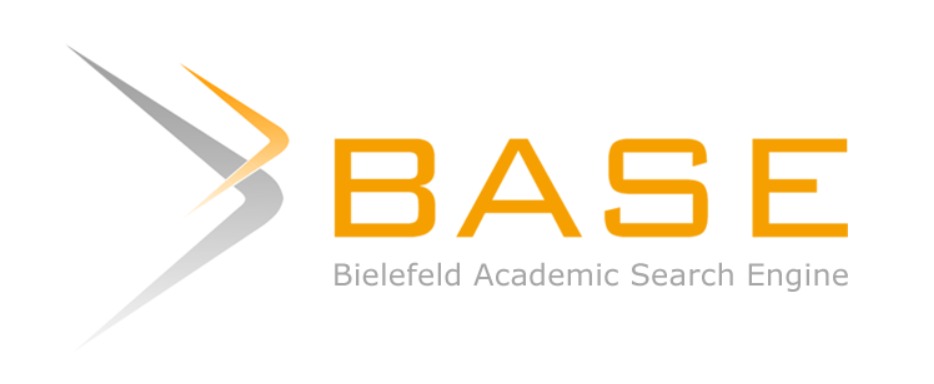Additional Menu
Author Guideline
|
QUALITY CRITERIA |
|
|
|
|
GENERAL |
|||
|
I. Basic Rules |
|||
|
1. Good and grammatically correct English. |
|||
|
2. Already used American English. |
|||
|
3. The language in this paper /manuscript is suitable for academic purposes. |
|||
|
4. Each table in the manuscript must be editable (not an image format). |
|||
|
5. Is your article already published on any other platforms? If yes, then we can not score this article. |
|||
|
6. Are any ideas, sentences, quotations, or paragraphs that you cited from other authors and not well-cited (you did not write the sources)? If yes: this article can not be scored, and we will stop the scoring process. |
|||
|
II. Manuscript |
|||
|
1. Set your margin to 30mm & the page size is 210 mm x 297 mm (A4). |
|||
|
2. Spacing of 1.5 and use Cambria (12pt) for font type. |
|||
|
3. Article type: Research article—must include more than 6000 words and not exceed 9000 words (exclude reference, no word limit in title page). |
|||
|
4. Article type: Review article—must include more than 5000 words and not exceed 6000 words (exclude references, no word limit in title page). Comprehensively summarize the literature on issues about community engagement & community engagement programs. |
|||
|
5. Article type: Case-based articles—must include more than 4000 words and not exceed 5000 words (exclude references, no word limit in title page). The article has a briefer introduction & less focus on theoretical frameworks in favor of a focus on technical approaches & outcomes. |
|||
|
ABSTRACT |
|||
|
1. Maximum 275 words in your abstract. |
|||
|
2. Provide context or background for the study and state the study's primary objective or hypothesis in 1–2 sentences. |
|||
|
3. Already mention and explain the theory that supports your research, especially about community engagement, community services, and community development. |
|||
|
4. Is there any hypothesis included? |
|||
|
5. Already Describe the necessary procedures used during the study, including the selection of study subjects and observational and analytical methods. |
|||
|
6. Summarize the main findings, including specific effect sizes and their statistical significance. |
|||
|
7. Already explained the previous research and the relation between your theory and your result. |
|||
|
8. Have 1—2 sentences of conclusions. |
|||
|
9. Define the primary outcomes that were measured for each group of subjects about the implementation of community engagement. |
|||
|
KEYWORDS |
|||
|
1. Have a minimum of 5 words or phrases that identify the most critical concept in the paper. |
|||
|
INTRODUCTIONS |
|||
|
1. Contains an explanation of why the issues need to be researched (research significance) and all supporting data or scientific evidence based on personal observations or the results of other researcher studies. |
|||
|
2. The theoretical background contains previous theories as to the basis of research and the temporary hypothesis. The theory can be in the form of scientific articles, articles in journals, textbooks, or other sources of scientific writing. |
|||
|
3. There is a problem that shows why this manuscript is important, existing gaps, previous research, and you must write the purpose of the manuscript. |
|||
|
4. The theoretical background contains previous theories as to the basis of research and the temporary hypothesis. The theory can be in the form of scientific articles, articles in journals, textbooks, or other sources of scientific writing. |
|||
|
5. In the context of community engagement, the theory that should be used primarily is the theory related to community engagement, community development, or community services. Other theories that are still needed to solve the problem of research to support theories that are delivered after the theory of community engagement are discussed. |
|||
|
6. After the theories are mentioned and discussed, you need to form a problem that shows why this manuscript is important, existing gaps, previous research, and you must write the purpose of the manuscript. |
|||
|
7. Example of the existing gaps and previous research statement is at the end of the Introduction section (after theories are mentioned and discussed): "........ (summary of background)....... Previous research explained on...... This research is limited on........ Indeed, this research intends to................. The purpose of this research that related to community engagement is ........." |
|||
|
8. The introduction part is already showing that this research is based on community engagement and/or community development. |
|||
|
9. Every table and pictures need explanation e.g. table 1 shows that… or regarding picture 1, it shows that… |
|||
|
METHODS |
|||
|
1. Does the location and time during the research already clearly mentioned in the methodology section? |
|||
|
2. Does the method already include a population and sample of the study? |
|||
|
3. Does the method already include research variables and research data? |
|||
|
4. The method of your manuscript also mentions the detail of your community engagement program. |
|||
|
5. Are the methods proven the hypothesis? |
|||
|
6. Are the methods already explained clearly? |
|||
|
DISCUSSION & RESULTS |
|||
|
1. The discussion is presented systematically from general, then leads to the specific. |
|||
|
2. The presentation of the research can be done with the help of tables, drawings/graphs, maps/plans, and schemes (the table is editable not in image format). All tables should be numbered with Arabic numerals, and these tables can be edit and not as images. |
|||
|
3. The result and discussion of your manuscript are also interconnected with the theory as well as the novelty of your manuscript about community engagement. |
|||
|
4. The results and discussion part should also describe the implication of this community engagement program to the community. |
|||
|
5. The minimum of your explanation in this chapter ranges from 40% to 50% of your manuscript. |
|||
|
6. References must be listed at the end of the paper. |
|||
|
7. Section headings should be left-justified, bold, with the first letter capitalized and numbered consecutively, starting with the Introduction. |
|||
|
8. Sub-section headings should be in the capital, and lower-case italic letters numbered 1.1, 1.2, etc., and left-justified, with second and subsequent lines indented. |
|||
|
9. There are no footnotes in this manuscript, no bullets, no numbering except for Section and Sub-Section in Introduction, Methods, Results & Discussion, & Conclusions. |
|||
|
10. Every figure should have a caption. All photographs, schemas, graphs, and diagrams are to be referred to as figures. The figure number and caption should be typed below the illustration in 12 pt and centred. If the figures get on other sources, write the name of the source below the figures, left-justified. The figures on your manuscript must send separately from your manuscript with high resolution. |
|||
|
11. Equations and formulas in the manuscript should be typed in Math type and numbered consecutively with Arabic numerals in parentheses on the right side of the page (if referred to explicitly in the text). |
|||
|
CONCLUSIONS |
|||
|
1. The conclusion of your manuscript defines the novelty of your study and the fruitfulness of your community engagement program, the benefit for society or community, and theoretical contribution from your manuscript. |
|||
|
2. This conclusion is a maximum of 3 paragraphs. |
|||
|
REFERENCES |
|||
|
1. References of your manuscript must be up to date (up to date and a minimum of 30 references that 50% of the references are from journal). |
|||
|
2. Anyone can access your references. |
|||
|
3. Format of the references for submitting the manuscript on this journal with the style of APA. |
|||
|
4. The reference of your manuscript is organized alphabetically. |
|||
|
REFERENCES’ EXAMPLE Journal Article Grady, J. S., Her, M., Moreno, G., Perez, C., & Yelinek, J. (2019). Emotions in storybooks: A comparison of storybooks that represent ethnic and racial groups in the United States. Psychology of Popular Media Culture, 8(3), 207-217.https://doi.org/10.1037/ppm0000185 Parenthetical citation: (Grady et al., 2019) Narrative citation: Grady et al. (2019) Journal Article with an Article Number Jerrentrup, A., Mueller, T., Glowalla, U., Herder, M., Henrichs, N., Neubauer, A., & Schaefer, J. R. (2018). Teaching medicine with the help of “Dr. House.” PLoS ONE, 13(3), Article e0193972. https://doi.org/10.1371/journal.pone.0193972 Parenthetical citation: (Jerrentrup et al., 2018) Narrative citation: Jerrentrup et al. (2018) Journal Article with Missing Information Missing Volume Number Stegmeir, M. (2016). Climate change: New discipline practices promote college access. The Journal of College Admission, (231), 44-47.https://www.nxtbook.com/ygsreprints/NACAC/nacac_jca_spring2016/#/46 Missing Issue Number Sanchiz, M., Chevalier, A., & Amadieu, F. (2017). How do older and young adults start searching for information? Impact of age, domain knowledge and problem complexity on the different steps of information searching. Computers in Human Behavior, 72, 67-78.https://doi.org/10.1016/j.chb.2017.02.038 Missing Page or Article Number Butler, J. (2017). Where access meets multimodality: The case of ASL music videos. Kairos: A Journal of Rhetoric, Technology, and Pedagogy, 21, 1.http://technorhetoric.net/21.1/topoi/butler/index.html Parenthetical citation: (Butler, 2017; Sanchiz et al., 2017; Stegmeir, 2016) Narrative citation: Butler (2017), Sanchiz et al. (2017), and Stegmeir (2016) --------- Newspaper Article References Carey, B. (2019, March 22). Can we get better at forgetting? The New York Times. https://www.nytimes.com/2019/03/22/health/memory-forgetting-psychology.html Harlan, C. (2013, April 2). North Korea vows to restart a shuttered nuclear reactor that can make bomb-grade plutonium. The Washington Post, A1, A4. Stobbe, M. (2020, January 8). The cancer death rate in the U.S. sees the largest one-year drop ever. Chicago Tribune. Parenthetical citation: (Carey, 2019; Harlan, 2013; Stobbe, 2020) Narrative citation: Carey (2019), Harlan (2013), and Stobbe (2020) --------- Book McKibbin, B. (2007). Deep economy: The wealth of communities and the durable future. Times Book/Henry Holt and Co. Chapter in an edited book Pigg, K. E., & Bradshaw, T. K., (2003). Catalytic community development: A theory of practice for changing rural society. In D. L. Brown & L. E. Swanson (Eds.), Challenges for rural America in the twenty-first century (pp. 385-396). Pennsylvania State University Press. --------- Conference Presentations and Proceeding Conference Presentations Evans, A. C., Jr., Garbarino, J., Bocanegra, E., Kinscherff, R. T., & Márquez-Greene, N. (2019, August 8–11). Gun violence: An event on the power of community [Conference presentation]. APA 2019 Convention, Chicago, IL, United States. https://convention.apa.org/2019-video Parenthetical citation: (Evans et al., 2019) Narrative citation: Evans et al. (2019) Abstract of a Conference Presentation Cacioppo, S. (2019, April 25–28). Evolutionary theory of social connections: Past, present, and future [Conference presentation abstract]. Ninety-ninth annual convention of the Western Psychological Association, Pasadena, CA, United States. https://westernpsych.org/wp-content/uploads/2019/04/WPA-Program-2019-Final-2.pdf Parenthetical citation: (Cacioppo, 2019) Narrative citation: Cacioppo (2019) Conference Proceedings published in a Journal Conference proceedings published in a journal follow the same format as journal articles Duckworth, A. L., Quirk, A., Gallop, R., Hoyle, R. H., Kelly, D. R., & Matthews, M. D. (2019). Cognitive and noncognitive predictors of success. Proceedings of the National Academy of Sciences, USA, 116(47), 23499–23504.https://doi.org/10.1073/pnas.1910510116 Parenthetical citation: (Duckworth et al., 2019) Narrative citation: Duckworth et al. (2019) Conference Proceedings published as a whole Book Conference proceedings published as a whole book follow the same reference format as whole edited books. Kushilevitz, E., & Malkin, T. (Eds.). (2016). Lecture notes in computer science: Vol. 9562. Theory of cryptography. Springer.https://doi.org/10.1007/978-3-662-49096-9 Parenthetical citation: (Kushilevitz & Malkin, 2016) Narrative citation: Kushilevitz and Malkin (2016) Conference Proceedings published as a Book Chapter The format for conference proceedings published as an edited book chapter is the same as for edited book chapters. Bedenel, A.-L., Jourdan, L., & Biernacki, C. (2019). Probability estimation by an adapted genetic algorithm in web insurance. In R. Battiti, M. Brunato, I. Kotsireas, & P. Pardalos (Eds.), Lecture notes in computer science: Vol. 11353. Learning and intelligent optimization (pp 225-240). Springer.https://doi.org/10.1007/978-3-030-05348-2_21 Parenthetical citation: (Bedenel et al., 2019) Narrative citation: Bedenel et al. (2019) |
|||













